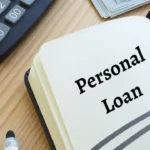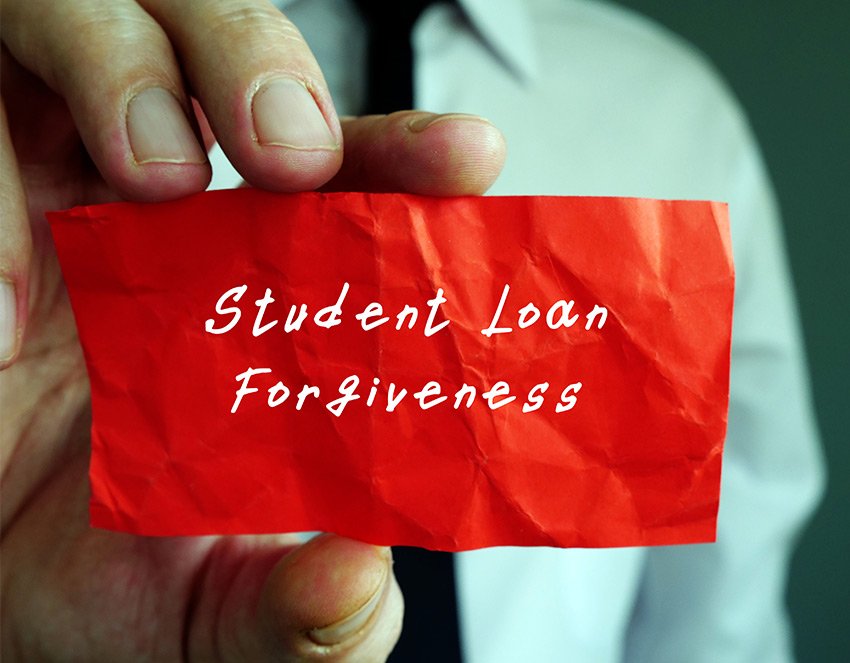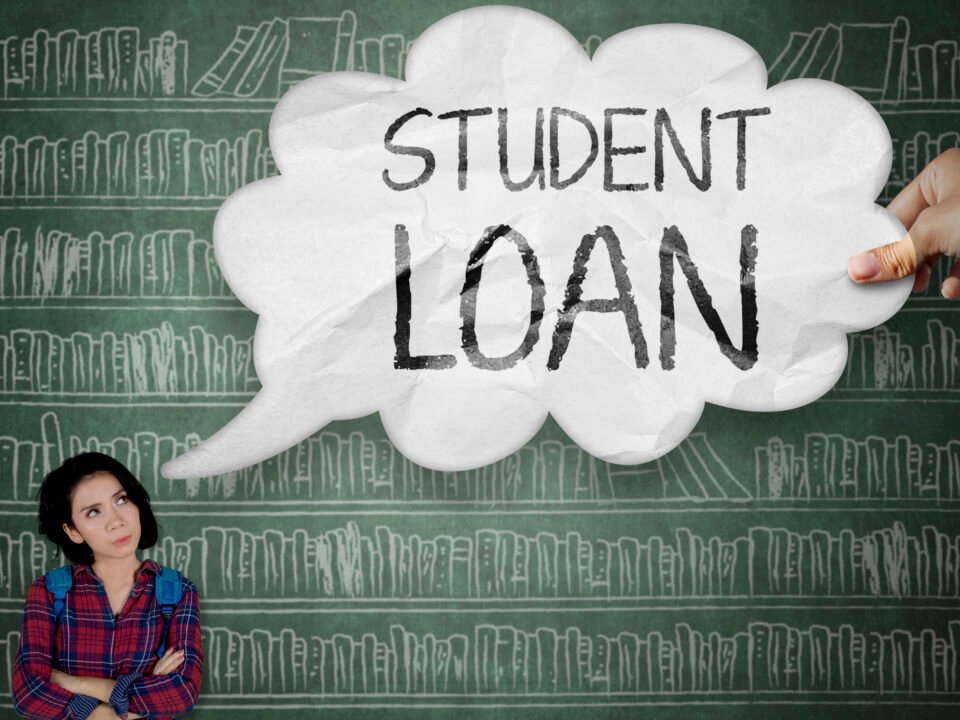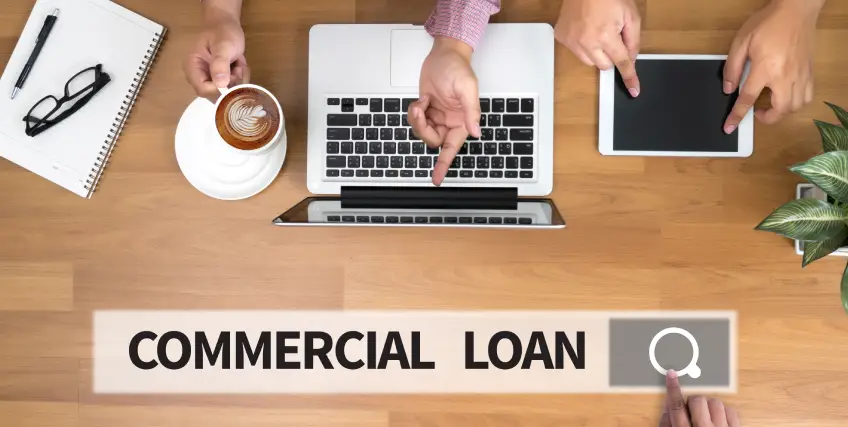
Can You Get a Personal Loan if You’re Self-Employed?
September 20, 2025
Understanding Small Business Loan Interest Rates in Ohio and How to Secure One
September 24, 2025How to Apply for Student Loan Forgiveness After 20 Years
Understanding Student Loan Forgiveness
Student loan forgiveness is a crucial financial relief avenue for borrowers who have dedicated years to repaying their educational debt. It allows eligible individuals to have a portion or all of their remaining federal student loans canceled, significantly reducing financial burdens. Various forgiveness programs exist, designed to cater to different borrower situations, with specific criteria attached to each.
One well-known program is the Public Service Loan Forgiveness (PSLF) option, which provides forgiveness after 120 qualifying monthly payments while working full-time for a qualifying employer in public service. However, for borrowers who have been in repayment for 20 years, the Income-Driven Repayment (IDR) forgiveness becomes particularly relevant. Under this program, after making consistent payments based on income for 20 years, borrowers may qualify to have their remaining loan balance forgiven.
Understanding eligibility criteria is paramount for borrowers. Typically, to apply for student loan forgiveness after 20 years, one must have been on an IDR plan and made the required number of payments on eligible loans. Such loans include Direct Loans, which are federal loans made directly by the U.S. Department of Education. It is also essential for borrowers to remain informed about their repayment status and to verify whether their cumulative payment history includes all qualifying payments, which can facilitate the application process significantly.
The process for application involves several steps. Initially, borrowers should gather documentation regarding their payment history and income status, as the Department of Education will consider this information when determining eligibility. Additionally, staying in communication with the loan servicer is advisable to ensure that all necessary requirements are met leading up to the 20-year mark. By comprehensively understanding these aspects, borrowers can navigate the complexities of student loan forgiveness successfully.
Eligibility Criteria for 20-Year Forgiveness
To qualify for student loan forgiveness after 20 years, borrowers must meet specific eligibility criteria outlined by the United States Department of Education. Primarily, this forgiveness program is designed for those who have federal student loans and are enrolled in specific repayment plans. Understanding these criteria is essential for borrowers aiming to leverage the benefits of this program.
One of the key factors influencing eligibility is the type of repayment plan a borrower must be enrolled in. To qualify for forgiveness after 20 years, borrowers typically need to be under an Income-Driven Repayment (IDR) plan, such as the Revised Pay As You Earn (REPAYE) or the Income-Based Repayment (IBR) plans. These repayment plans are designed to make payments more manageable based on income and family size, with any remaining loan balance eligible for forgiveness after the requisite repayment period.
Moreover, it is important that the loans in question are federal student loans. Private loans are not eligible for this forgiveness program, so borrowers must ensure that they are dealing with federal loans, such as those obtained through the Direct Loan program, Federal Family Education Loans (FFEL), or Federal Perkins Loans. Another significant aspect pertains to the borrower’s employment. To achieve forgiveness after the 20-year mark, individuals should be engaged in qualifying employment, which usually includes working full-time for a qualifying employer, although employment specifics can vary.
Lastly, borrowers should also consider the impact of any deferment or forbearance periods on their repayment timeline. Time spent in these statuses does not typically count toward the 20 years of qualifying payments. Thus, proper record keeping and understanding how these periods affect eligibility is crucial. By adhering to these guidelines, borrowers can effectively navigate the process of how to apply for student loan forgiveness after 20 years, maximizing their chances for relief from their student loan debt.
Steps to Prepare for Your Application
Preparing to apply for student loan forgiveness requires careful planning and organization. The first step is to gather all necessary documents related to your student loans. This includes loan agreements, payment histories, and any correspondence with your loan servicer. Having these documents on hand will help ensure a smooth application process and provide your loan servicer with the information needed to verify your eligibility for forgiveness.
Next, it is crucial to verify the status of your loans. This means checking whether your loans qualify for forgiveness programs such as Public Service Loan Forgiveness (PSLF) or Income-Driven Repayment (IDR) forgiveness. Each program has specific criteria, and understanding these requirements will guide you in how to apply for student loan forgiveness after 20 years effectively.
Additionally, borrowers should review their repayment history meticulously. This includes confirming that all your payments were made on time and noting any deferments or forbearances. Maintaining a consistent repayment history is vital, as failures in this area can impact your eligibility. If there are discrepancies in your payment records, it is essential to resolve these issues with your loan servicer prior to submitting your application.
Understanding the types of loans you have is equally important. Federal loans are generally eligible for various forgiveness programs, but private loans are often excluded. If you have a mix of loan types, focus on consolidating or refinancing options that may help make your loans eligible for forgiveness. Lastly, ensure that all your financial records are accurate and current, as any inconsistencies can lead to delays or denials in your application process.
Taking these preparatory steps will not only enhance your understanding of student loan forgiveness opportunities but also streamline your application when you are ready to proceed.
The Application Process for Forgiveness
Applying for student loan forgiveness after 20 years can seem daunting, but understanding the steps involved can make the process more manageable. First, it is crucial to determine your eligibility for the forgiveness programs available, such as the Public Service Loan Forgiveness (PSLF) or other income-driven repayment plans that offer forgiveness after 20 years of qualifying payments.
The initial step in the application process is to gather documentation. This includes your loan information, employment history, and any previous communication with loan servicers. To apply for student loan forgiveness, you will need to complete the specific application form for the program you are interested in. For PSLF, this is the Employment Certification Form, which verifies your qualifying employment and the loans being considered for forgiveness.
Once you have obtained the necessary forms, fill them out accurately. Ensure that all required fields are completed, and provide supporting documentation as needed. It is advisable to keep copies of your application and any related documents for your records. After completing the application, submit it to your loan servicer. For many, this can be done electronically, but it is wise to check if your servicer also accepts paper applications. Additionally, if you are submitting a paper application, consider using certified mail to confirm receipt.
After submission, anticipate a processing period where your loan servicer will evaluate your application and determine eligibility for student loan forgiveness. The timeline for a decision can vary, with some applicants receiving responses within a few months, while others may wait longer. Therefore, it is essential to regularly follow up with your servicer after submitting the application. Understanding what to expect throughout this process can help alleviate concerns as you navigate your journey towards student loan forgiveness.
What to Do If Your Application is Denied
Receiving a denial for student loan forgiveness can be discouraging, but it is essential to understand the next steps you can take. The first step is to carefully review the denial notice, which will typically outline the reasons for the decision. Common reasons for denial include incomplete or incorrect information on the application, not meeting the eligible payment requirements, or being ineligible due to the type of loans held. Understanding the specific reasons can provide valuable insights into how to address the issue effectively.
If you believe that your application was wrongfully denied, you have the right to appeal the decision. The process usually involves submitting a formal appeal to the loan servicer, explaining your case, and including any documentation that supports your argument for reconsideration. Ensure that your appeal addresses each reason provided for the denial, as this will strengthen your case considerably. Adhering to the specified deadlines for appeals is crucial, as missing these can result in the loss of your right to contest the decision.
Additionally, if your application was denied due to missing or incorrect documentation, gather the necessary paperwork and consider re-applying. Furthermore, one of the most effective strategies is to maintain open communication with your loan servicer throughout this process. They can provide guidance on what corrections need to be made or whether additional documentation is required.
To prevent future denials, it is advisable to double-check your application for accuracy before submission. Research the eligibility criteria for student loan forgiveness thoroughly, ensuring that you meet all the required conditions. Consulting with a financial advisor or a student loan expert can also contribute to a more successful application. This proactive approach can help ensure that you successfully navigate the process of applying for student loan forgiveness after 20 years and increase your chances of approval.
Maintaining Communication with Loan Servicers
Effective communication with loan servicers is an essential component of navigating the student loan forgiveness process. When making inquiries about your eligibility or application for student loan forgiveness after 20 years, it is critical to establish a clear and consistent line of communication with your loan servicer. This not only empowers you but also provides the information necessary to ensure a smooth application process.
To maintain effective communication, start by routinely checking in with your loan servicer. Schedule regular updates, which can be done monthly or quarterly, to inquire about your forgiveness application status. These updates can clarify any outstanding requirements or documentation needed. Document each conversation, including the date, the representative you spoke with, and any key points discussed. This record will serve as a reference in future discussions and can be invaluable if discrepancies arise.
When communicating with your servicer, it is crucial to ask specific and relevant questions. For instance, inquire about the exact criteria that must be met to qualify for forgiveness, whether there are any steps you need to take, and timelines associated with the process. Additionally, feel empowered to advocate for yourself. If you believe you have met all requirements for student loan forgiveness after 20 years but your application seems stalled, politely express your situation and request further clarification. This proactive approach can often yield more favorable outcomes.
Lastly, establish multiple channels of communication. While phone calls are effective, consider also using email or secure messaging within the loan servicer’s portal. This ensures that you have documented communications that can be referenced if needed. By fostering an environment of open communication, not only do you gather the necessary information to successfully navigate the forgiveness process, but you also take an important step towards advocating for your financial future.
Tax Implications of Student Loan Forgiveness
When borrowers pursue student loan forgiveness, particularly after two decades of repayment, it is crucial to understand the potential tax implications that may arise. A significant aspect of student loan forgiveness is that the amount forgiven can be considered taxable income by the Internal Revenue Service (IRS). This means that borrowers may face an unexpected tax bill in the year their loans are discharged, as the forgiven amount is added to their total income for that tax year.
To illustrate, suppose a borrower has $50,000 in student loans forgiven after fulfilling the required repayment terms. If this amount is treated as taxable income, it could push the borrower into a higher tax bracket, increasing their overall tax liability for that year. Given this scenario, it is prudent for borrowers to prepare adequately for any potential tax implications associated with their student loan forgiveness.
Borrowers can take several strategic steps to manage their finances effectively once their loans are forgiven. First, they should review their tax situation and possibly consult with a tax professional to understand the specific ramifications of their newly increased income. Planning for the anticipated tax bill is essential; setting aside funds from everyday expenses or seeking additional income sources can help mitigate financial strain during tax season. Additionally, it may be wise to explore how to apply for student loan forgiveness after 20 years within tax-advantaged accounts or through means that could minimize tax impacts.
Furthermore, consideration should be given to the timing of forgiveness. If possible, coordinating the discharge of loans with lower income years could alleviate the tax burden. Overall, understanding the tax implications surrounding student loan forgiveness can empower borrowers to make informed financial decisions and adequately prepare for changes in their financial landscape following the forgiveness of their student loans.
Resources and Tools for Borrowers
Borrowers seeking student loan forgiveness after 20 years are presented with a variety of resources and tools designed to assist them in navigating the complexities of the student loan landscape. These resources are critical for understanding eligibility and the application process, ensuring borrowers can maximize their benefits efficiently.
First and foremost, the U.S. Department of Education’s website is an essential tool. It provides a comprehensive overview of different student loan forgiveness programs, including the Public Service Loan Forgiveness (PSLF) and Income-Driven Repayment (IDR) forgiveness options. Borrowers can access valuable information on how to apply for student loan forgiveness after 20 years and detailed guidelines on eligibility criteria.
Additionally, various online calculators can help borrowers estimate their forgiveness timelines based on their repayment plans and financial circumstances. These calculators facilitate informed decision-making by allowing users to input their loan data to visualize potential outcomes over time. Websites such as the Student Aid Estimator provide this functionality, enabling borrowers to project when they might qualify for loan forgiveness.
For personalized assistance, borrowers may benefit from contacting student loan counseling services. Organizations like the National Foundation for Credit Counseling (NFCC) offer free assistance and professional advice on managing student loans and understanding the forgiveness process. Furthermore, for legal representation, resources such as the Student Borrower Protection Center provide information on legal aid options available to borrowers facing challenges with their loans.
Overall, the plethora of resources available empowers borrowers to take proactive steps toward achieving student loan forgiveness. By leveraging these tools, individuals can more effectively navigate their journey towards financial relief and ensure they are adequately informed about their rights and options.
Success Stories: Overcoming the Challenges of Forgiveness
For many individuals grappling with substantial student loan debt, the prospect of loan forgiveness after 20 years can seem daunting. However, there are numerous success stories that highlight the transformative potential of this process. Take the example of Lisa, a school teacher who accumulated significant debt while pursuing her degree. After twenty years of consistent payments, she discovered the Public Service Loan Forgiveness (PSLF) program, which illuminated the path toward her long-awaited financial reprieve. Despite facing a complex application process riddled with paperwork and verification hurdles, Lisa persevered, diligently keeping records and seeking guidance from others who had successfully navigated the same path.
Similarly, John, who worked in nonprofit organizations for over two decades, encountered his own set of challenges when applying for student loan forgiveness. Initially feeling overwhelmed by the various forms and documentation required, he found support in online forums and local workshops, which provided clarity and encouragement. John’s determination paid off when he finally received loan forgiveness, freeing him from a financial burden that had loomed over him for years. Both Lisa and John’s experiences underscore a crucial point: while the journey to applying for student loan forgiveness may be fraught with challenges, it is often possible to overcome them with the right resources and perseverance.
The impact of student loan forgiveness on their lives has been profound. For Lisa, the journey has enabled her to take control of her finances and pursue other interests that were previously stifled by debt. John’s experience allowed him to feel a renewed sense of motivation in his career, leading him to further his education and skills without the fear of debilitating loans weighing him down. Such stories not only illustrate the complexities of the forgiveness process but also serve as a source of inspiration for others considering how to apply for student loan forgiveness after 20 years.
FAQ: How to Apply for Student Loan Forgiveness After 20 Years
1. Is student loan forgiveness available after 20 years?
Yes, under Income-Driven Repayment (IDR) plans, federal student loans can be forgiven after 20 or 25 years of qualifying payments, depending on the plan. Some borrowers may also qualify for forgiveness through newer IDR programs or recent federal changes.
2. Which repayment plans qualify for forgiveness after 20 years?
The following plans may lead to forgiveness after 20 years:
-
Revised Pay As You Earn (REPAYE/now SAVE) – forgiveness after 20 years (undergraduate loans only)
-
Pay As You Earn (PAYE) – forgiveness after 20 years
-
Income-Based Repayment (IBR) – forgiveness after 20–25 years depending on when loans were taken out
-
Income-Contingent Repayment (ICR) – forgiveness after 25 years
3. What counts as a “qualifying payment”?
A qualifying payment is:
-
Made under an eligible IDR plan
-
For the correct monthly amount
-
On-time (within 15 days of the due date)
-
While loans are not in deferment, forbearance, or default
4. How do I apply for student loan forgiveness after 20 years?
To apply:
-
Confirm you’re on an eligible IDR plan.
-
Check your payment count through your loan servicer or via studentaid.gov.
-
After reaching the 20-year (or 240 monthly payments) threshold, the Department of Education or your loan servicer will automatically review your eligibility for forgiveness.
-
You may not need to submit a separate application—forgiveness can be automatic if your records are accurate.
5. Do I need to recertify my income every year?
Yes, for IDR plans, you must recertify your income and family size annually. Failure to do so may increase your payments and pause progress toward forgiveness.
6. Will I owe taxes on the forgiven amount?
Under current law (as of 2025), federal student loan forgiveness through IDR plans is tax-free through 2025, thanks to the American Rescue Plan. After that, tax treatment may change depending on legislation.
7. How can I check how many qualifying payments I’ve made?
You can log into your account at easzfin and use the IDR payment tracker. Your loan servicer can also provide a payment history and help verify how many qualifying payments you’ve made.
8. What if I consolidated my loans—do earlier payments still count?
If you consolidate your loans, the payment count may reset, unless covered by the IDR account adjustment program. The Department of Education is currently implementing a one-time adjustment that credits borrowers for earlier qualifying payments made under any repayment plan, even prior to consolidation.
9. What is the IDR account adjustment?
The IDR account adjustment is a temporary initiative (through mid-2024, possibly extended) that gives borrowers retroactive credit toward forgiveness for:
-
Certain months in repayment
-
Some deferment and forbearance periods
-
Time before consolidation
This adjustment may push some borrowers past the 20- or 25-year threshold sooner than expected.
10. What should I do if I’m close to 20 years of payments?
-
Contact your loan servicer to verify your qualifying payments.
-
Make sure you’re enrolled in an IDR plan.
-
Watch for communications from the Department of Education regarding your eligibility.
-
Update your contact and income information to avoid delays.
11. What happens after my loan is forgiven?
Once your loan is forgiven:
-
You no longer owe payments.
-
Your account should reflect a $0 balance.
-
If there is a tax liability (after 2025), you may need to report the forgiveness on your tax return.
-
Your credit report should be updated to reflect the forgiven loan.
12. Does Public Service Loan Forgiveness (PSLF) also forgive loans after 20 years?
No. PSLF forgives eligible federal loans after 120 qualifying payments (10 years) for borrowers working full-time in qualifying public service jobs. It’s a separate program from IDR forgiveness.
Read More:




